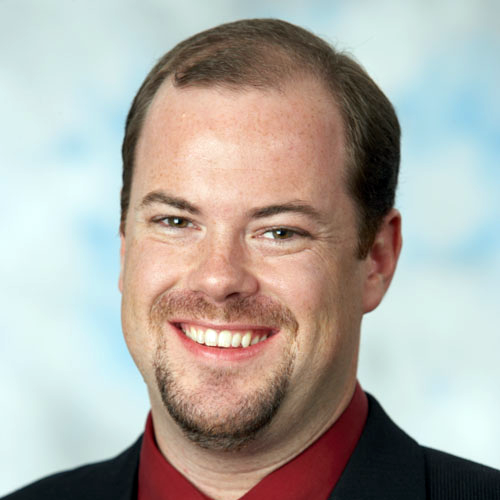Q: Jason, a whitepaper from Cisco's Sourcefire group focuses on advanced malware protection and the advantages of the "continuous approach" to monitoring versus the point-in-time model. In a nutshell, give me some bullet points on why you recommend that "continuous approach."
Jason Wright: In a nutshell, it's as simple as this -- a point-in-time technology has only one chance to make a correct decision as the traffic flows through the device. According to studies by Cisco, 75% of all attacks take only minutes to begin data exfiltration but take much longer to detect. More than 50% of all attacks manage to persist without detection for months or even years before they are discovered and, once discovered, several weeks before full containment and remediation are achieved.
Traditional point-in-time technologies only scan once and they infiltrate the extended network where they are difficult to locate, let alone eradicate. What's needed is pervasive protection across the full attack continuum -- before, during, and after an attack.
To elaborate further, continuous analysis gives Cisco technologies the ability to change their mind. This is the way that the human mind works in everyday situations. Why do people change their minds about anything? The answer is because new information presents itself that causes us to reevaluate a previous decision. People do this every day and Cisco is endeavoring to mimic that human intelligence in technologies. So the first time we see a new file, we may know very little about its behavior even after a thorough analysis of file metadata. Regardless of whether we think a file is good or bad, we will continue to track and analyze that file's behaviors, processes, connections, activities, movements, relationships to other files, and so on. If we later decide to change our mind -- that a file is actually bad, for example -- we can go back and quarantine that file, change a security policy, limit the access rights of an infected system, or notify administrators of a problem. With an infrastructure that can continuously gather and analyze data to create security intelligence, security professionals can -- through automation -- identify IoCs, detect malware that is sophisticated enough to alter its behavior to avoid detection, and evaluate full packet capture in order to successfully remediate. A threat-centric model and operational approach to security lets defenders respond at any time, all the time. Continuous monitoring, automated analysis, control automation, and retrospective security exist already. They are integrated. They are pervasive. And they work together, in continuous fashion, to secure networks, endpoints, virtual, data centers, the cloud, and mobile across the full continuum -- before, during, and after the attack.
Q: In a recent Cisco blog, the author says that if he were an IT security manager looking for a security product to defend his organization -- and a security vendor claimed to provide "continuous protection" -- he would ask several "show me" questions of that vendor. What are the most important questions to ask?
Wright: That blog concludes with some of the important questions to ask and links to videos illustrating how Cisco can show customers what we can do:
Like a metropolis, the black market is a collection of skilled and unskilled suppliers, vendors, potential buyers, and intermediaries for goods or services surrounding digitally based crimes. Specifically:
Q: Cisco recently unveiled an analytics strategy to help customers access, analyze, and act on data – from the cloud to the data center and so on. Why should organizations be interested in accessing this new family of pre-packaged analytics software?
Wright: This announcement related to the Cisco strategy on IOE, and specifically our ability to offer analytics at the edge of the network as more sensors are delivered to more devices. Speaking strictly from a security perspective, the analytics strategy mentioned refers to our Cognitive Threat Analytics technology. This is not a software package but technology that is built into our Cloud Web Services (CWS) offering which routes an organization's Web traffic through our cloud-based inspection mechanisms. This is part of the movement beyond traditional signature-based technologies that require foreknowledge of a threat. Because of the high number and sophistication of new threats, one part of our security strategy is to use statistical modeling, machine learning, big data analytics, and behavioral analysis to identify threats we've never seen before. This is also part of the answer to the first question regarding continuous analysis; which we also use in the CWS solution to always be watching, never forget, and turn back time on threats.
In addition, a significant amount of threat data analytics comes from our Cisco Talos Security Intelligence and Research Group. Talos' renowned security experts are a combined team from Sourcefire's Vulnerability Research Team, Cisco's Threat Research and Communications, and Cisco Security Applications group. The team's expertise spans software development, reverse engineering, vulnerability triage, malware investigation, and intelligence gathering. Talos researchers create threat intelligence for Cisco products to protect customers from both known and emerging threats. Talos is backed by sophisticated infrastructure and systems that provide exceptional visibility from the aggregation and analysis of unrivaled telemetry data at Cisco, encompassing:
- Billions of Web requests and emails
- Millions of malware samples
- Open source data sets
- Millions of network intrusions
The result is a security intelligence cloud producing "big intelligence" and reputation analysis that track threats across networks, endpoints, mobile devices, virtual systems, Web, and email. This provides a holistic understanding of threats, their root causes, and scopes of outbreaks, translating into leading security effectiveness for Cisco security solutions.
Q: Cisco is a Diamond Sponsor of Black Hat Asia from March 24-27. Why is that an important part of your marketing strategy?
Wright: Cisco has taken several actions that illustrate our commitment to becoming the world's foremost security solution provider, including:
- The acquisition of Sourcefire
- The acquisition of Cognitive Analytics
- The acquisition of ThreatGRID
- Integration of Cognitive Analytics into CWS
- Integration of Sourcefire Advanced Malware Protection (AMP) technologies into content security products and services within four months of the close of acquisition
- Integration of Sourcefire IPS and AMP technologies into the ASA Firewall platform, and Content Security solutions within one year of acquisition close
- The acquisition of Neohapsis, a trusted provider of mobile and cloud security services
Because the Black Hat conference series is such a high-visibility event, we want to be a part of it. Expect to start seeing Cisco a lot more in security events as we prove to the world that we are not only thoroughly committed to the security industry, but thoroughly committed to leading it.






